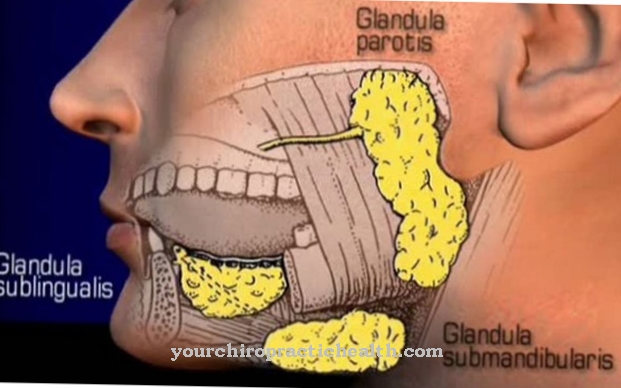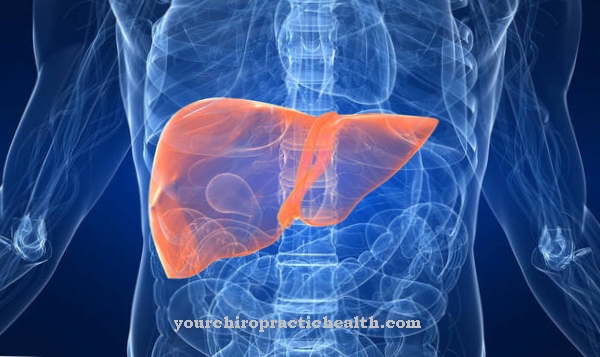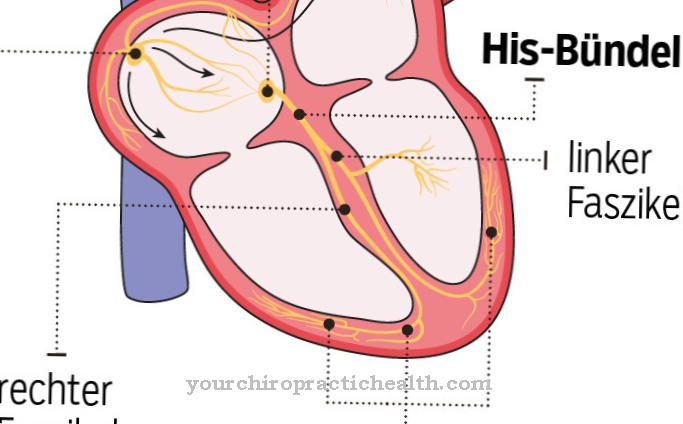Medical professionals and former patients say that digestion can be healthy even without it Gallbladder is possible. In the following article we will try to answer whether the gall bladder is really as superfluous as it seems.
What is the gallbladder?

Based on the name Gallbladder this anatomical structure represents a compact bladder. The gall bladder is hollow on the inside and is filled with a special endogenous substance starting from the liver.
The gallbladder is directly connected to the liver via a complicated "system of paths". This requirement is important so that it can fulfill its own function and also fulfill its task in the entire digestive system.
The technical term for the gallbladder in medicine and anatomy is Vesica fellea biliaris. In the case of the gallbladder, the synonym biliaris refers to the bile. In contrast to this complicated Latin name, the gallbladder is often colloquially referred to as bile, but this is not entirely correct.
Not only humans, but also some species of animals have a gallbladder depending on their diet.
Anatomy & structure
The Gallbladder measures just under 10 cm and is approximately 4 cm thick. The shape of the gallbladder is somewhat elongated. The entry and exit of bile from the liver into the gallbladder and out of the gallbladder into the duodenum are called the gallbladder ducts. Due to the yellowish-green colored, viscous bile, the gallbladder also appears in this color.
After a cut through the gallbladder, the wall shows up as a complex of different layers of tissue and cells. In the case of the gallbladder, these include the mucous membrane, a layer of connective tissue and a layer of smooth muscles that can contract.
The tunica serosa, which is adjacent to the liver, serves as the outer covering of the gallbladder. Nerve fibers and blood vessels are also innervated in the gallbladder.
Functions & tasks
The function of Gallbladder is based on a complicated physiology, which is exerted in particular by the bile juice. The gallbladder serves as a reservoir for the bile, which is formed in the liver and additionally thickened in the gallbladder.
The gall bladder releases the bile in a targeted manner when there are fats in the food that need to be broken down into their digestible components. Due to its ability to contract, the gallbladder is able to release the bile into the duodenum in a dosed manner.
The gallbladder has room for about 50 to 60 ml of bile. In the times when no food is ingested, water is stored and withdrawn from the bile. While eating, the gallbladder is filled again and can work.
Since the gallbladder is only a so-called storage organ, it can also be removed without complications with digestive activity. The bile secretion can also be released from the liver into the duodenum in a non-thickened state.
Diseases
The Gallbladder does its work imperceptibly. The gallbladder is only noticeable if an ultrasound scan is performed or if solid gallstones have formed. As the gallbladder contracts, these migrate into the bile ducts and trigger painful colic. Gallstones are therefore a fairly common gallbladder disease.
Gallstones can lead to inflammation of the gallbladder, also known as cholecystitis. If there is a build-up of pus in the gallbladder, emphysema of the gallbladder develops. Jaundice can result from these gallbladder diseases. This arises because the bile secretion can no longer drain through the gallstones, which block the pathways that drain the bile. Bile builds up in the blood and patients develop yellowish skin.
Other diseases of the gallbladder include bursting or rupture of the gallbladder, a so-called congestive bile with jaundice and a shrinking gallbladder with loss of function. In addition, a gallbladder can develop carcinoma, a malignant tumor. Parasitic diseases of the gallbladder caused by liver fluke are rather rare.
Typical & common diseases
- Gallstones
- Gallbladder inflammation
- Gallbladder cancer and bile duct cancer
- Biliary colic
- Cholestasis












.jpg)



.jpg)










.jpg)
